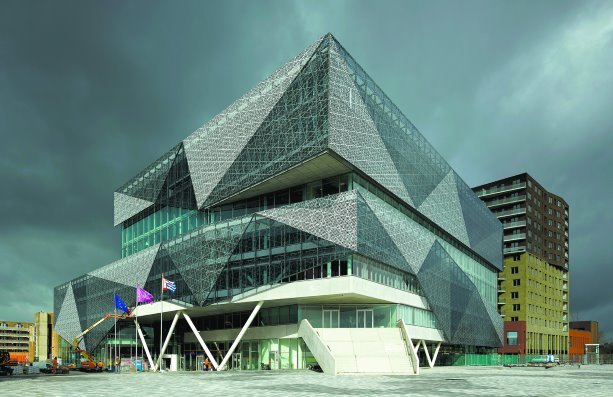Three years ago, a group of Danish architects and developers paid a visit to Canada, an event organized in part with the assistance of the Royal Architectural Institute of Canada (RAIC).
As David Craddock, interim executive director of the institute recalled, that visit was deemed a success by both the visiting architects and the Canadian firms that met with them.
"The RAIC was interested in participating with the Danish consulate in Toronto on a return visit as it had done on a smaller scale in 2011," Craddock said.
"In many ways, this return visit was an opportunity to explore common themes and differences in design in more detail."
That return visit took place in mid-September, when representatives from five of Denmark’s most prominent architectural firms participated in From Denmark to Canada, a business delegation led by the Danish Crown Prince Couple and the Confederation of Danish Industry.
Firms were 3XN, CEBRA, Henning Larsen Architects, schmidt hammer lassen architects and Dorte Mandrup Arkitekter.
"We have with us a really extraordinary group of individuals representing a diverse range of companies," Ian Chodikoff, director of Fora Strategic Planning said at a contemporary architecture symposium entitled Polar Coordinates.
At the symposium, representatives of the Danish firms gave presentations highlighting some of their projects.
An official from each firm led a workshop at the symposium at the BMO atrium at Evergreen Brick Works, a former industrial site that has been transformed into a community landmark.
The workshop themes were culture, housing, learning, urban development and workplace.
Globe and Mail architecture critic Alex Bozikovic reviewed some recently completed Toronto projects.
The symposium was followed by the official opening of the architectural exhibit "Contemporary Danish Architecture."
In an interview, Craddock said emphasis was placed throughout the visit on exposing the common aspects of Danish and Canadian design "as well as suggesting ways in which they either differ or are evolving in similar patterns."
Like Canadians, he said, the Danes work within strict government guidelines on building codes, zoning and planning constraints as well as within strict and advanced energy standards.
"For Canadians to see the work of Danish firms with their compact and energy-efficient designs, it inspires us to create more energy-efficient and sustainable buildings and communities," he said.
"Their city planning and public amenities are examples of good design and create, what are arguably, the best living environments in the world."
On the flip side of the coin, Craddock said Danish architects are interested in Canadian construction techniques, master planning, and procurement policies as well as the widespread use and re-use of buildings for public realm purposes — such as the Evergreen Brick Works.
For his part, 3XN founder and creative director Kim Herforth Nielsen said via e-mail that Danish building codes are among the toughest in the world, "much more demanding than LEED, and tightened up each year.
"Danish architects have been working with the challenges of sustainable design for decades and learned to constantly invent new solutions that create value for money and benefit people and the environment."
Nielsen, who founded 3XN in 1986, and whose firm now employs nearly 100 staff in offices in Copenhagen and Stockholm, said he believes Danish architects can contribute to the Canadian building industry in a number of ways.
He said 3XN’s practice is based on the philosophy that architecture shapes behaviour.
"We, as do other Danish firms, design all of our projects from this perspective, with a particular focus on the people who use and live in our buildings and creating environments that contribute to their well-being."
Throughout the delegation’s visit, Nielsen both Danes and Canadians highlighted the point that the two countries share many common values and a similar culture.
"I agree with this (assessment) and think this bodes well for productive collaborations between Canadian and Danish architects and other building team consultants in the future."
Craddock said it is hoped that a Canadian delegation of architects could pay a visit to Denmark within the next 12 to 18 months. A small group toured Copenhagen in 2010.
One of the estimated 50 Canadian architects who participated in the Toronto event was PLANT Architect Inc. partner Lisa Rapoport.
She said the fact that the Danish architects were in Toronto with an exhibit and supported by the Danish government and royalty was as enlightening as the discussions, presentations and workshops themselves.
"This is just one component of a larger program of not just disseminating but exporting Danish architecture and architects to the world," she said.
"It is not just ‘luck’ that Danish architects are becoming well known as potential team partners for projects globally."











Recent Comments
comments for this post are closed